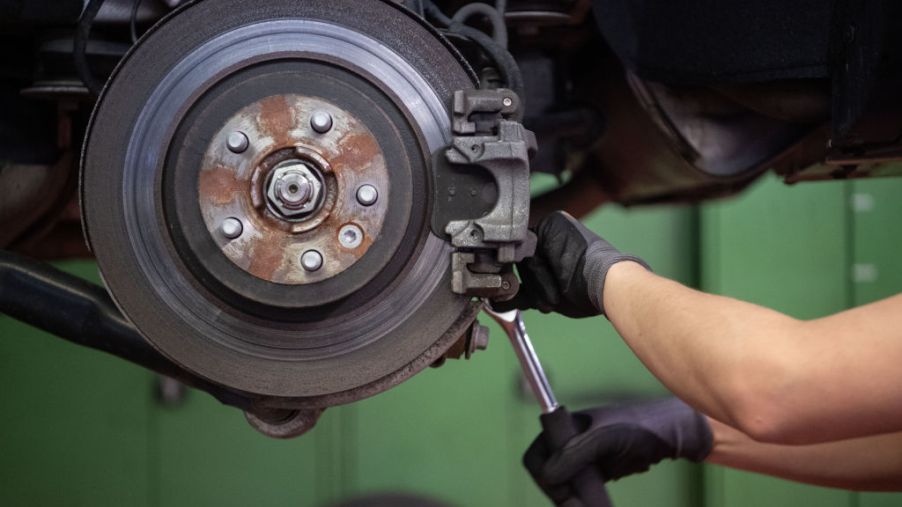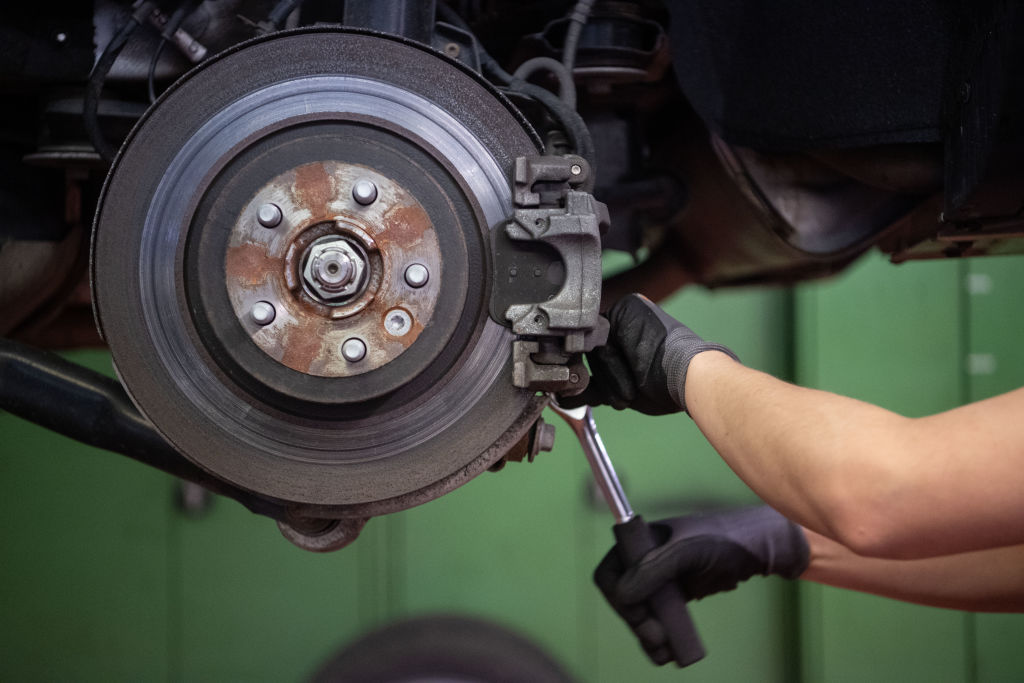
You May Be Using Your Brakes Incorrectly
Sure, it’s impressive when a car can accelerate quickly, but stopping is just as, if not more important. Inspecting your brakes is a regular part of vehicle maintenance. But all the checkups in the world won’t matter if you’re not using those brakes correctly in the first place.
The most effective braking strategy
In a recent r/Cars sub-Reddit thread, user u/redjfkldje asked if it was better to brake harder over a short distance, or softer over a longer distance. In terms of pad life, you might think the former is the better choice. But braking softer isn’t just better for pad life, it’s simply the more effective strategy, Practical Motoring reports.
As CarTalk explains, braking suddenly very hard puts more strain on your car’s suspension and brake components. It also causes a rapid increase in rotor temperature, which can lead to warping. Going gradually, however, eases this stress and gives enough time for the heat to safely dissipate. It also means your pads don’t wear as quickly, Autoblog reports.
To be fair, in a panic stop, all bets are off. And, as Road & Track and Team O’Neill Rally School explain, there is one more scenario where braking hard and suddenly is preferred. That’s if you’re driving on a racetrack or rally course.
But around town, slowing gradually is the way to go. But, before you do, you’ll need to bed your brakes in.
Your brakes need to be bedded-in
Rotor warp isn’t actually all that common, Tire Rack reports. Usually, it’s that your rotors have imperfections that cause their surfaces to become uneven. This, in turn, makes braking worse, and causes accelerated wear on the pads and calipers. It can also lead to hot spots, which prevent the rotor from cooling properly. But this can be avoided, Kal Tire explains, with proper bedding-in.
This process, Donut Media explains, is relatively straight-forward, although it depends on which brake supplier you use. The usual procedure is to first slow the car from 60 mph, to build up heat in the rotors. Then, brake from 60-10 mph repeatedly.
This bedding-in procedure doesn’t only give you a smooth braking surface. It also prevents rotor scarring and removes impurities from the brake pads.
Warning signs to watch out for

Like the pads themselves, a car’s rotors do eventually wear down and need to be replaced.
An excessively-thin, warped, or uneven-surfaced rotor, Your Mechanic reports, will start to squeal. These surface irregularities also cause vibrations to spread into other parts of the car. This can manifest as a pulsing pedal and a strange ‘shimmying’ sensation in the steering.
And if you’ve braked too excessively too often, other components can also fail, Popular Mechanics reports. Calipers can stick, which can lead to the car pulling to one side. The hoses and lines can also get damaged, losing fluid and letting in air. This causes a mushy pedal and potentially complete brake failure.
Inspect your pads and rotors regularly, and stop correctly, though, and you should be able to avoid many of these issues.
Follow more updates from MotorBiscuit on our Facebook page.


